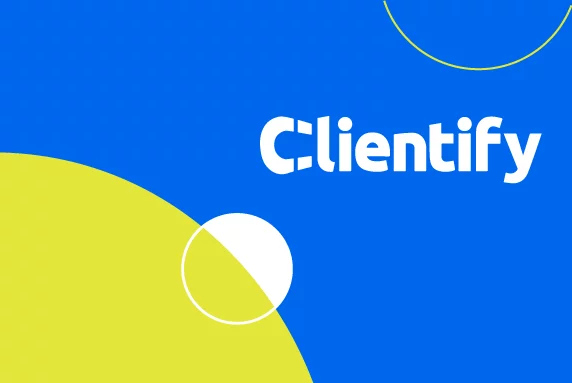Advertising strategies play a crucial role in building brand presence, attracting new customers and increasing sales. Companies that succeed in standing out in saturated markets are those that implement effective and well-planned advertising strategies.
But what exactly are advertising strategies, what types exist and how are they applied in the real world? This article answers these questions, offering a comprehensive guide to understanding and applying the most effective advertising strategies.
What are advertising strategies?
Advertising strategies are the planned and structured approaches that companies use to promote their products or services to their target audience through advertisements.
These strategies include selecting advertising channels, creating persuasive messages, defining audiences and measuring results. The main objective of an advertising strategy is to influence consumers’ purchasing decisions, increasing brand visibility and maximizing return on investment (ROI).
Key components of an advertising strategy
- Advertising objectives: Clear and specific objectives guide the strategy, such as increasing brand awareness, generating leads, driving sales or fostering customer loyalty.
- Target audience: Defining precisely who the advertising is aimed at is essential to create relevant messages and select the right channels.
- Advertising messages: Creative content that communicates the value of the brand, its products or services in an engaging and persuasive way.
- Advertising channels: The means through which messages are distributed, which can include both traditional channels (such as television and radio) and digital channels (such as social networks and Google Ads).
- Advertising budget: The financial allocation for the campaign, which must be carefully planned to maximize impact without exceeding available resources.
- Metrics and KPIs: Key performance indicators that allow measuring the success of the advertising strategy and making adjustments in real time.
Types of advertising strategies
There are various advertising strategies that can be applied depending on the objective of the campaign, the target audience and the resources available. Some of the most common ones are described below, along with real examples that demonstrate their effectiveness.
Advertising in traditional media
Traditional media advertising includes television, radio, print and outdoor advertising (billboards, public transportation, etc.). Although digital marketing has gained ground, traditional media are still effective, especially for reaching mass or targeted audiences that consume these channels.
Coca-Cola has successfully used television advertising for decades. Its Christmas campaigns, such as the famous “Christmas Caravan,” are iconic and have helped cement Coca-Cola’s image as a festive, family-friendly brand. Through catchy jingles and emotional visuals, Coca-Cola has created an emotional connection with consumers that endures year after year.
2. Digital advertising
Digital advertising encompasses a wide range of tactics, including search engine advertising (SEM), social media advertising, display ads, and video ads. Digital advertising allows for precise targeting, real-time measurement and continuous optimization, making it highly effective for reaching specific audiences and measuring ROI directly.
Airbnb has mastered digital advertising using retargeting campaigns on social media and Google Ads. If a user searches for accommodations in Paris on Airbnb and does not complete a booking, they are likely to see targeted Airbnb ads on social media and other websites, reminding them of the pending booking. This strategy has been key to increasing conversions and keeping the brand in the consumer’s mind.
3. Native advertising
Native advertising integrates naturally into the environment in which it is presented, as if it were editorial content. This type of advertising is less intrusive and is perceived as more relevant, as it is designed to match the form and function of the platform on which it appears.
Glossier beauty products brand Glossier’s sponsored blog post “Into The Gloss” is an example of successful native advertising. Instead of a traditional ad, Glossier uses a story that resonates with the blog’s readers, integrating their products naturally into the content. This has helped Glossier build a loyal community that values both the content and the brand’s products.
4. Advertising in social networks
Social media is a powerful channel for advertising due to its advanced targeting capabilities and high level of interaction. Platforms such as Facebook, Instagram, Twitter and LinkedIn allow companies to reach specific audiences based on demographics, interests and behaviors.
Nike has used Instagram to launch highly effective campaigns targeting young, active audiences. Its “You Can’t Stop Us” campaign not only promoted products, but also resonated with current social issues, generating millions of interactions and strengthening Nike’s position as a brand that supports positive change.
5. Search Engine Advertising (SEM)
Search engine marketing (SEM) includes pay-per-click (PPC) advertising on platforms such as Google Ads. This strategy is ideal for capturing high-intent traffic, as ads appear when users search for specific terms related to the product or service.
Amazon uses SEM aggressively to dominate product search results. When searching for “buy books online,” Amazon ads are likely to appear at the top of the results, directing users directly to its platform. This strategy has been crucial to maintaining Amazon’s competitive advantage in e-commerce.
6. Remarketing
Remarketing is a strategy that allows you to show ads to people who have already interacted with your brand but have not completed a desired action, such as making a purchase. It is highly effective for improving conversions, as it targets users who are already familiar with your product or service.
Shopify uses remarketing to target users who have visited your website but have not completed the registration process. These users see personalized ads that invite them to return to the site and complete their registration, increasing conversion rates for new users.
7. Influencer Marketing (Influencer Advertising)
Influencer marketing uses social media personalities and opinion leaders to promote products or services. This strategy is effective because influencers’ followers tend to trust their recommendations, which can translate into increased brand credibility and sales.
Daniel Wellington, the watch brand, grew quickly thanks to their influencer marketing strategy. They collaborated with hundreds of influencers on Instagram, who promoted the watches to their followers in exchange for a free watch and a discount code for their audiences. This approach helped the brand quickly reach millions of potential customers.
8. Guerrilla advertising
Guerrilla advertising is an unconventional and creative strategy that seeks to make a memorable impact on a limited budget. It generally takes place in public spaces and uses the environment to create a surprising or innovative message.
The guerrilla campaign for the film “The Blair Witch Project” is legendary. Prior to its release, the producers created a website that presented the film as if it were a real documentary. They distributed flyers at film festivals claiming that the actors were missing, generating a buzz that led to the film becoming a smash hit on a minimal budget.
9. Video advertising
Video is a powerful tool for capturing audience attention and conveying complex messages in an engaging way. Platforms such as YouTube, TikTok and social media video options allow brands to reach millions of people with visually engaging content.
Coca-Cola’s “Share a Coke” campaign used videos on social media and YouTube to show how people found Coke bottles with their names or the names of friends, creating a global sharing and personalization movement that significantly increased sales.
10. Mobile advertising
Mobile advertising refers to ads that are displayed on mobile devices, including mobile-optimized apps and websites. With the increased use of smartphones, this type of advertising has become essential to reach consumers on the go.
Starbucks uses mobile advertising through its app to send personalized offers to its customers based on their purchase history and location. This strategy has been key to increasing visit frequency and customer loyalty.
11. E-mail advertising
Email marketing is a form of direct mail that allows brands to reach their audience in a personalized and segmented way. Email is a powerful tool to nurture leads, foster loyalty and generate recurring sales.
Amazon is a master of email marketing. They use personalized emails based on users’ shopping and browsing history to recommend products, send special offers and remind them of products they left in their cart. This strategy has helped Amazon increase sales significantly, as each email is carefully designed to be relevant and engaging to the recipient.
12. Programmatic advertising
Programmatic advertising uses automation to buy and sell online advertising space in real time. This strategy allows advertisers to reach their target audience with precision, based on data such as browsing behaviors, demographics and interests.
The New York Times has used programmatic advertising to optimize its advertising revenues, allowing advertisers to access their readers in a more efficient and relevant way. Thanks to this strategy, they have been able to improve the user experience by offering ads that are more aligned with the interests of their audience.
13. User-generated content advertising
This strategy is based on engaging users to create brand-related content, which is then used in advertising campaigns. This type of content is very effective because it generates authenticity and a stronger emotional connection with the audience.
GoPro has successfully utilized user-generated content by encouraging its customers to share videos and photos taken with their cameras. These videos are then shared on social media and used in advertising campaigns, showcasing the quality of GoPro products and the creativity of its users, which reinforces brand loyalty.
How to select the right advertising strategy?
Selecting the right advertising strategy for your business depends on several factors:
- Understanding your target audience: Understanding who your audience is is critical to selecting the right strategy. Are they young people who spend a lot of time on social media, or do they prefer to consume content on television or in print? This knowledge will help you choose the most effective channels.
- Define clear objectives: Before choosing a strategy, clearly define what you want to achieve. Are you looking to increase brand awareness, generate leads, or directly increase sales? Each objective may require a different strategy.
- Available budget: Budget plays a crucial role in the choice of advertising strategy. Some channels, such as television, can be expensive, while others, such as email marketing or social media, may be more accessible to companies with limited budgets.
- Competition and market: Analyze what the competition is doing. Are they dominating in a specific channel? This may be a sign that that channel is effective for the target audience. However, it may also indicate saturation, in which case you could look for an alternative strategy to stand out.
- Internal capabilities: Consider the skills and resources you have available internally. If your team is strong at creating visual content, video or social media advertising might be more effective. If you have a robust sales team, email advertising could complement their efforts well.
Conclusion
Advertising strategies are essential for any business that wants to grow and stay competitive in today’s marketplace. From traditional media to advanced digital tactics, choosing the right strategy can make the difference between the success and failure of a campaign.
Understanding your target audience, defining clear objectives, and selecting the channels and tactics that best align with your resources and capabilities are critical steps in developing an effective advertising strategy. By implementing and adjusting these strategies based on data and results, companies can maximize their ROI and build strong, lasting brands.
There is no one-size-fits-all approach to advertising; it’s about finding the right combination of tactics that work for your specific business and allow you to achieve your goals efficiently and effectively.
Do it all with Clientify: engage, automate and close sales
Enter for free in the space where Clientify users share tips, help each other and learn how to sell more with AI.
Share your doubts and learn with others who are also growing their business.





